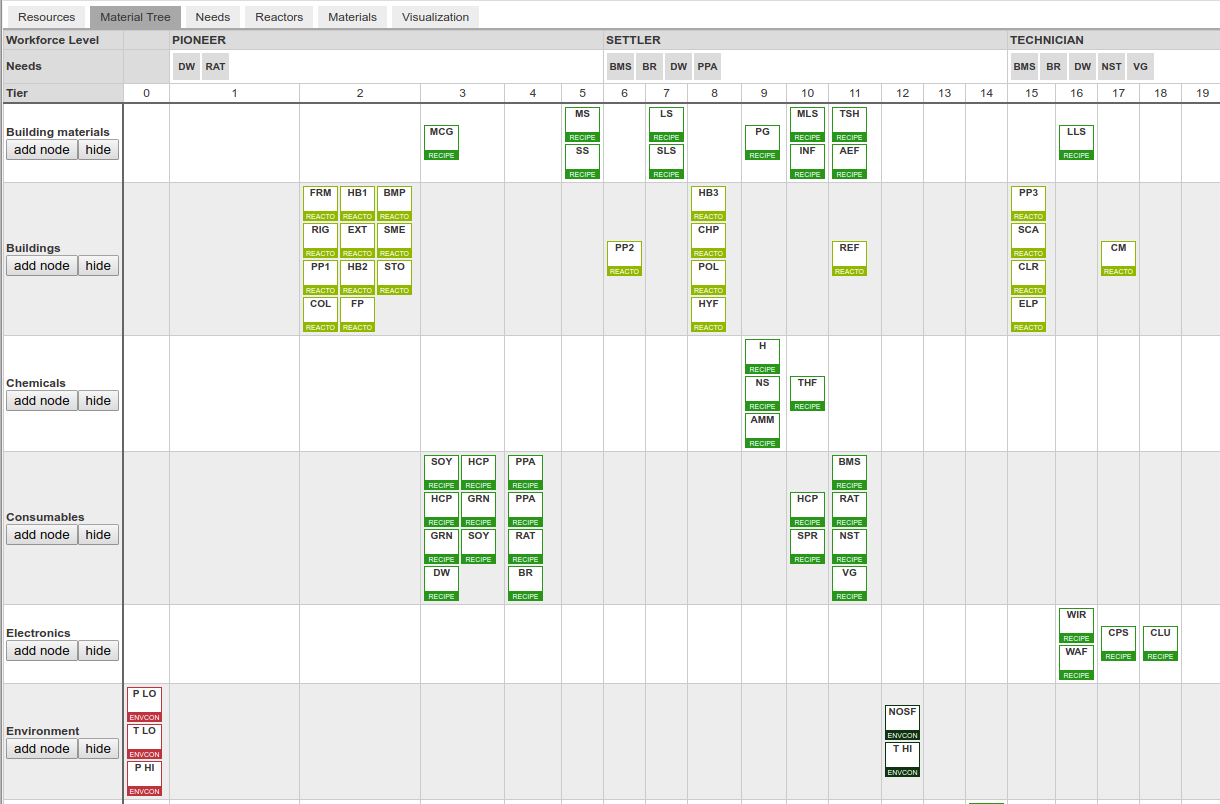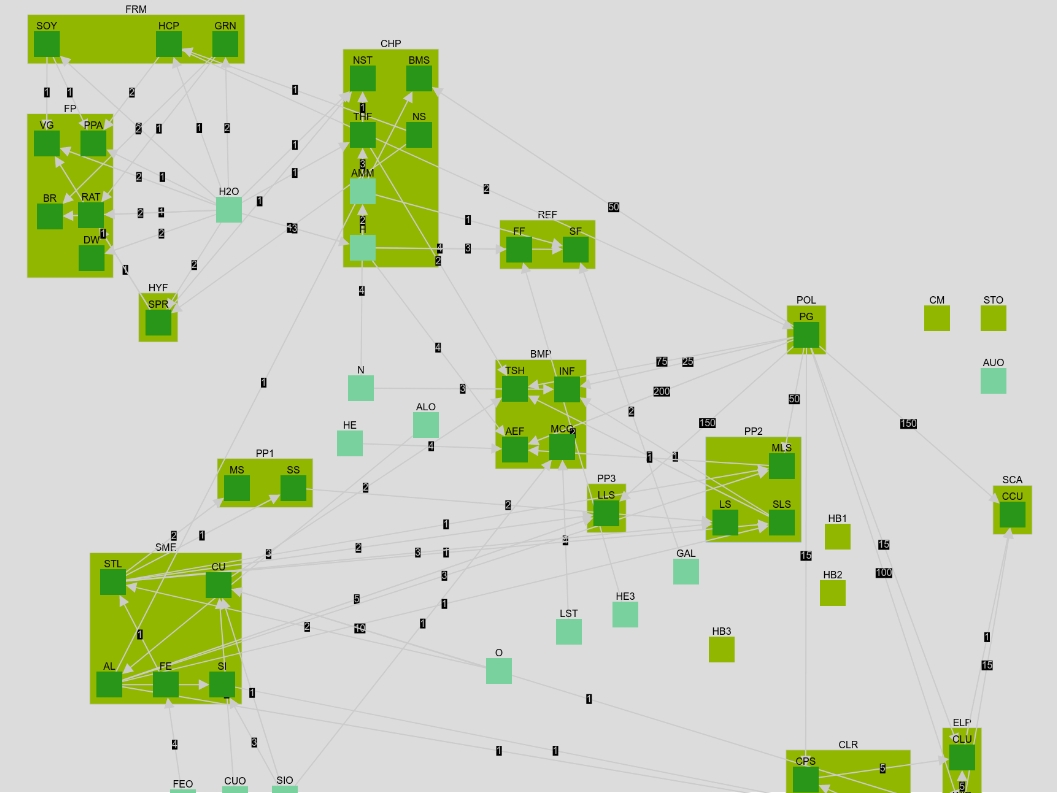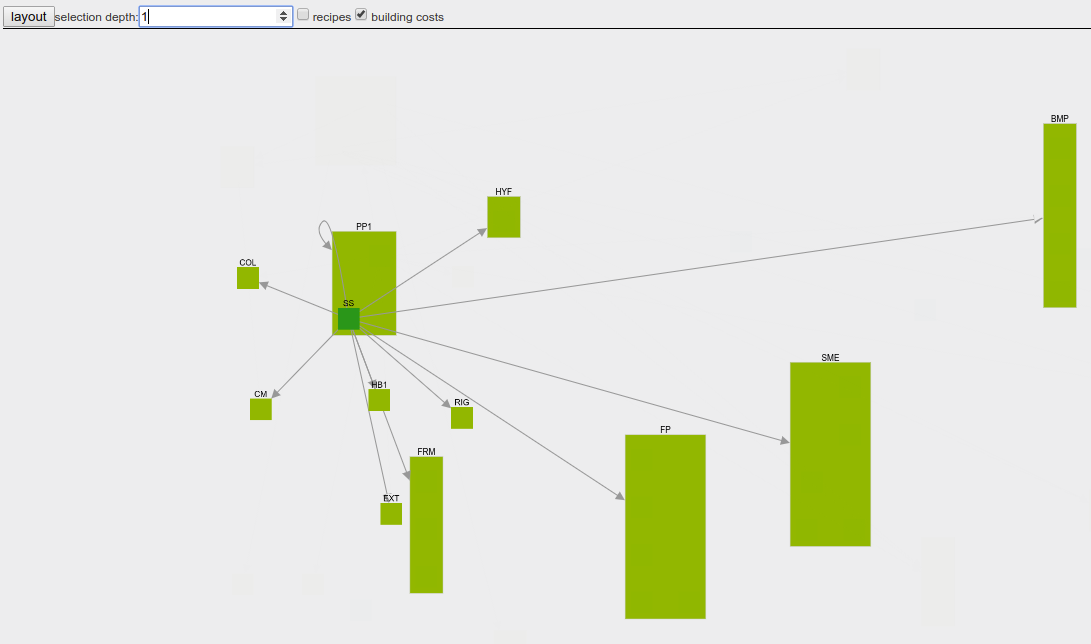While Julian is about to set set course towards a full-blown marketing offensive, Martin is getting Corporations ready and Michi is working on the mother of all material trees.

Martin
Almost there! This week I finished more or less all of the server-side code required to invite another company as a shareholder to your corporation and to respond to such an invite on the invitee’s side. The former already has all the required UI components while the latter will get its interface some time next week.
On a more technical note: In our clustered architecture, things tend to become more complicated once more than one entity is involved in any given transaction because quite a bit of boilerplate is required to ensure the game’s overall state remains consistent. At the same time, one important principle in programming is DRY: Don’t repeat yourself! And the code I’ve been writing recently definitely didn’t feel very “dry”. Writing cross-entity transactions feels more tedious than I think it should, so I might have to look into this some time soon… everything we’ve planned for the coming weeks in terms of new features relies heavily on inter-entity-interactions, so I’m worried we’ll waste a lot of time and produce hard-to-follow code without some additional abstraction. I can hear Michi screaming “Stop writing frameworks!” in my head!

Michi (molp)
Last week I told you about a new feature I am implementing: the Chamber of Global Commerce and I hoped to be able to show some screenshots of the corresponding tiles this week. Well… I got sidetracked.
Our team is currently being supported by a fellow game designer. He came up with the two features I described last week and is now moving onto refining/redefining all materials in the game.
As you might know we have a custom tool for that purpose that we wrote a long while ago. It looks like this:

It is pretty good in defining materials and buildings and especially good in finding circular references and dependencies between different materials. Its main focus are materials, so it is hard to see which materials are produced and consumed in a certain building. Our game designer asked for a visualization of exactly that and so I built one this week.
In this screenshot, buildings are the large green rectangles and the materials that can be produced in them are embedded. The arrows indicate which material or resource is necessary to build another material:

Elements in the tree can be clicked and only the selected element and its graph-neighbours will remain. In this example, the small structural element has been selected and thus its input materials and uses in other products are visible.


Julian (Mjeno)
My work week has been short due to a quick trip to Berlin and back, but it’s also been an important turning point. I’ve essentially been pondering the following question: Is there such a thing as marketing a product too early?
For the past few months, I’ve been in a bit of a weird spot. My most important task has been (and remains) to get people to play our game - but the game cannot be played yet. You may remember that in one of my very first devlogs, I talked about setting up a so-called funnel. Because the game isn’t out yet, that funnel is currently aimed at newsletter sign-ups rather than game sign-ups. It works as follows: get people’s attention on our social channels and external websites, direct them to our homepage where they sign up for our newsletter and then let them know when the game comes out. For this funnel to work best, every step needs to pique (or maintain) the user’s interest and naturally lead them to the next one. In the past, I was afraid that the funnel wasn’t ready. That if I started a broader marketing offensive now, including contacting members of the press and the whole shebang, many people would drop out along the way and not give us a second chance when everything was finally optimized. Most importantly, our new website isn’t up yet, and I still think it will generate a lot more newsletter sign-ups than the current one does. It just looks so much more interesting.
What I don’t think any more is that not marketing before everything is ready does us any good. It’s only half true what many people tell you, that waiting for the right moment to advertise is crucial. It might be crucial not to write to bigger press outlets before anything newsworthy happens. It might be true that we only have one shot to get covered by the biggest gaming magazines out there, or at least that we have to make the first shot count. But anything else, like contacting smaller influencers, writing to more specialized press, giving interviews and putting Prosperous Universe on games lists, will most likely be worth more the earlier we get into it. Worst case: some people will not find the game in its current state and its current presentation too interesting. But even they will have heard of us, going from Cold to Warm Audience. Maybe they will check back in a few months. And even if they don’t - with the sheer number of potential customers out there, we have no chance of reaching all of them with our budget anyway. So, at the end of the day, the longer we’re out there, in as many places as possible, the bigger our newsletter list will be when it really counts.
That is why, starting next week, I’m going to finally do what I’ve come here for: get the game out there. I’m done with most of the preparation anyway. Alpha #6 is still a few months away, but for it to be as big as we want, a lot of (online) legwork will be required on my part. Wish me luck!
As always: we’d love to hear what you think: join us on the forums!
Happy trading!

